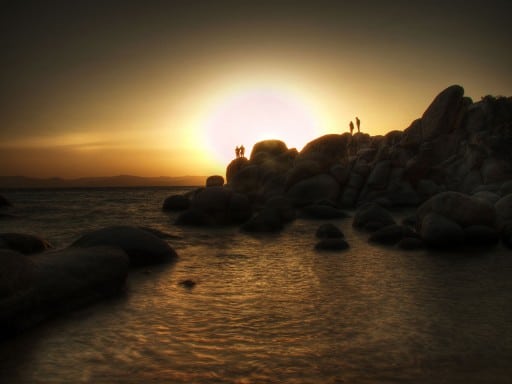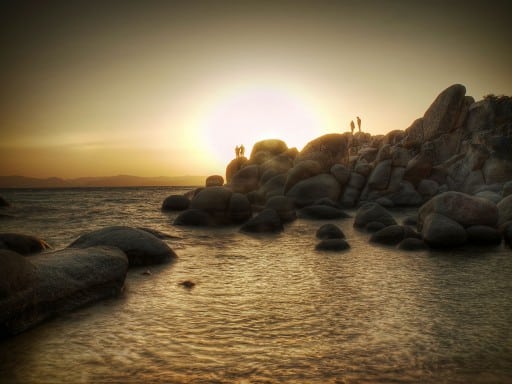 I was going through all of my photos for these August posts of some of my favorite places and techniques and discovered this old photo. I took it in Lake Tahoe about 2 years ago, when I was pretty fresh at HDR processing and post processing. I thought this photo was the bees knees and that I really had something I could work with. I can remember being so frustrated by it, trying to get it just right in Photomatix and then bringing it into Photoshop. It seemed I couldn’t do anything to get it to where I really wanted to be. The truth is, back then I really didn’t have a very good workflow nor the experience to get it to look like I wanted.
I was going through all of my photos for these August posts of some of my favorite places and techniques and discovered this old photo. I took it in Lake Tahoe about 2 years ago, when I was pretty fresh at HDR processing and post processing. I thought this photo was the bees knees and that I really had something I could work with. I can remember being so frustrated by it, trying to get it just right in Photomatix and then bringing it into Photoshop. It seemed I couldn’t do anything to get it to where I really wanted to be. The truth is, back then I really didn’t have a very good workflow nor the experience to get it to look like I wanted.
Fast forward to about 3 weeks ago. I found that little gem just sitting there telling my new post processing self to give it another go. I was happy with the tone mapping so I didn’t re-address that, below is my workflow that brought this image the life it deserved:
- First thing, I shot this in JPEG, I know I know, yell at me all you want, but I didn’t know any better at the time! Since this shot was snagged in JPEG format, I had some very strong Chromatic Aberrations to deal with. I am not sure what it is about JPEG and HDR but they tend not to mix very well due to the strong chromatic aberrations (red and cyan fringing on edges). I reduced the CA’s in Photoshop using the Lens Correction Filter.
- I then added a curves layer to bring out the midtones a bit more. They needed a serious boost to get more light in the center.
- I also desaturated it a bit as the midtone increase brought out some unwanted colors.
- I added a High Pass Sharpen to the rocks and the figures.
- I finished it off by selecting the water and boosting the detail with Topaz Adjust 5.
Photo Tip:
Go back to your older photos as your photographic process ages. You will soon find that what you did then looks nothing like what you do now. Often times you will find that your process is much more refined, as it should be. You should be constantly pushing yourself to break out of your normal routine to see if something may work better. Through such experimenting you will be able to incorporate some these new processes with your old. As you continually do this you will refine your process and have much more striking imagery. I can’t wait to tackle this one in another 2 years!










